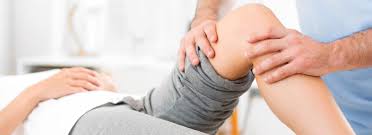Muscle Soreness Explained
A lot of my students say their muscles ache or remain stiff a day or two after the workout session. So, is it good or bad? The answer lies in what kind of workout they have performed. We will elaborate that later, but first let’s learn the 3 basic contractions that any muscle undergoes:
- Concentric contraction (Shortening of the muscle)
- Eccentric contraction (Lengthening of the muscle)
- Isometric contraction (No change in the length of the muscle)
Take the example of a basic squat. During the downward motion (aided by gravity) the quadriceps (thighs) are lengthened, and shortened during the upward motion (against gravity), so in the first case its eccentric contraction and the second its concentric contraction. If we hold the basic squat, then it will be of isometric contraction (muscle length doesn’t change).
Muscle soreness is perceived as a dull, aching pain in the affected muscle often combined with tenderness & stiffness, which starts about 24 hours after the workout and may remain till 72 hours in some cases. The pain is typically felt only when the muscle is stretched, contracted or put under pressure, not when it is at rest. This stiffness is a typical symptom of DELAYED ONSET MUSCLE SORENESS (DOMS).
It only occurs when we perform a bout of exercises focussing on the eccentric phase of a muscle. Isometric (static) phase causes much less soreness and concentric (shortening) phase causes none. Therefore, it has to be noted that DOMS would only be present if, and only if there are unaccustomed eccentric exercises performed in a sequence of a single or a group of muscles. High intensity training will never produce DOMS; instead it produces LACTIC ACID in the muscle, which is a by-product of anaerobic (without oxygen) energy systems. This lactic acid often results in a sharp stinging pain which is caused immediately and subsides within 60 minutes or so. DOMS often occurs in endurance training (running, cycling etc.)
So, is it bad and should we avoid working that muscle? The answer is a big no. DOMS indicates that the muscle fibres have been damaged, which is a sign of an effective workout. And studies have shown that working the muscle alleviates the soreness associated. It is advisable to mix eccentric exercise with concentric & isometric ones, so that the body is able to adapt quickly. Also note that static stretching before the workout doesn’t reduce DOMS, in fact overstretching increases its likelihood.
Consider DOMS a sweet pain or a necessary evil, but take care that you don’t mistake any joint pain for DOMS, because joints are never meant to be under any duress, only muscles are.



